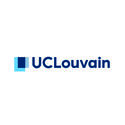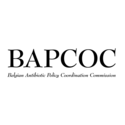In short
Clostridioides difficile infections (CDI) are a major cause of severe diarrhea and inflammation of the colon (colitis) in healthcare institutions. They are considered as ’healthcare associated infections’ (HAI) as they usually occur after treatment with antibiotics. The objective of this project is to monitor the occurrence and severity of CDI cases in Belgian hospitals, in order to draw appropriate infection prevention and control measures.
Project description
Clostridioides difficile (formerly known as Clostridium difficile) is an anaerobic, gram-positive, spore-forming, toxigenic bacterium. It is often found in the intestinal tract of healthy individuals and various animals. It can become pathogenic when the normal balance of the gut microbiota is disturbed, a phenomenon known as ‘dysbiosis’. Antibiotics exposure, being a major trigger for dysbiosis, is also the main risk factor for Clostridioides difficile infections (CDI).
CDI is a leading cause of severe, sometimes life-threatening, diarrhea and inflammation of the colon (pseudomembranous colitis) acquired in hospitals or nursing homes. Furthermore, 10-20% of CDI are recurrent, and many resist conventional antimicrobial treatments, leading to a significant clinical and economic burden.
Following the increase in CDI incidence and the emergence of hypervirulent strains, Sciensano implemented the surveillance of CDI in Belgian hospitals in 2007. The objectives of this surveillance are to:
- assess and monitor the incidence of CDI at hospital and national level
- and identify and follow the microbiological characteristics of circulating strains, at hospital and national level, in collaboration with the National Reference Centre (NRC).
Surveillance of CDI, together with good antimicrobial stewardship, is a cornerstone of healthcare-associated infections control. In addition, new challenges are emerging in this field, such as:
- the development of innovative treatments (including fecal microbiota transplantation)
- the emergence of new potentially virulent strains
- the environmental and food contamination requiring a “one-health” approach
- the increase in community cases
- the role of the microbiome in other pathologies
- …
The data from this surveillance represent an opportunity to investigate these issues in greater depth and to contribute to scientific research.
How can a hospital participate in the national surveillance of CDI?
Participation in the surveillance is voluntary and requires the registration of all cases identified in the hospital during at least one semester per year and the shipment of 5 consecutive strains to the NRC for typing.
Since July 2017, the data are collected using the Healthdata platform (HD4DP). Information on accessing Healthdata and registering data via Healthdata can be found at the Heathdata support page. Specific information on the variables collected for the CDI surveillance and on how to prepare a CSV file can be found on the page Data Collections (click ‘NSIH-CDIF’ for the registration).
The definitions and instructions for completion can be found in the surveillance protocol (available in Dutch and French).
Each year, Sciensano presents the results of the surveillance in an annual report (see the section ‘Scientific reports’). The individual feedback reports for the participating hospitals are available through the online data visualisation platform Healthstat.
Results
The annual reports (see the section ‘Scientific reports’) synthesise data from different sources: national surveillance data (epidemiological and microbiological), hospital stay data (RHM/MZG), billing data (INAMI/RIZIV) and death register data.
The link between the two classifications (UCL and EU) of the microbiological national surveillance data can be found ![]() here.
here.
Sciensano's project investigator(s):
Service(s) working on this project
Partners








